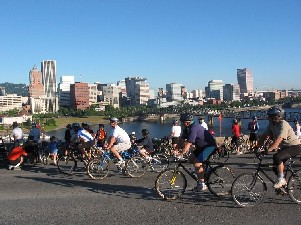I have lived in and around Worcester for most of my life and I used to think that when given a choice, most people would choose to relocate. However, Worcester has been undergoing a lot of changes over the past several years and I have begun to notice a new trend. As many of my friends who go to college in Worcester are graduating, I have noticed that many of them are choosing to stay put. I am about to enter my senior year and I am starting to think that I may want to as well because I have begun to see a lot of things that are actually attractive about living in Worcester.
Worcester is Cheap: Despite the fact that Worcester is the second largest city in both Massachusetts and New England, it has an overall cost of living about 15% below the state average. In particular, the cost of owning or renting a home is significantly less than in other areas. In contrast, Boston has a cost of living about 20% above the state average. Realistically, this means that the price of a three bedroom apartment in Worcester can equate to the price of a studio apartment in Boston.
Worcester Pays Well: I have always thought that many Massachusetts graduates move to Boston after college to find good paying jobs. I was wrong. I did some research and to my surprise, I found that starting salaries for college graduates in Boston are only about 2% higher than salaries for equivalent jobs in Worcester. When considering salary and cost-of-living, college graduates living and working in Worcester end up with between $5,000 - $10,000 more in disposable income on average per year. This is enough to feel significant for many college graduates.
Worcester Residents Work Everywhere: Even when graduates decide that they want to live in Worcester but would rather work elsewhere, they can. Worcester is approximately located between Boston, Providence and Springfield. This places four medium to large cities within commuting distance from Worcester, which greatly increases job opportunities. Worcester itself has begun to develop a base of biotech companies that tend to hire many graduates.
Worcester is a City in Transition: Worcester's importance as an industrial city peaked in the 1950's and then underwent a long period of decay. However, Worcester is starting to show new signs of life. Downtown is being completely redesigned through a long-term project called City Square. The project is a public-private partnership that is seeking to bring residential and commercial activity downtown by creating a new shopping district, better highway access and improved services. For a long time the project seemed to be going nowhere, but recently the speed has picked up and downtown is beginning to come to life. New businesses and restaurants are moving downtown and I have begun to feel an urban pulse for the first time while walking through the city. It seems now that Worcester is moving in a great direction and will continue to develop into a first-class city over the next several years.
As I begin my job search for after graduation, I think that I will strongly consider remaining put in Worcester.
Labels: city, city layout, city of worcester, college, college graduate, cost of living, urban development, urban planning, Worcester, worcester appeal, Worcester city-square, Worcester college students, Worcester colleges, Worcester cost of living, Worcester improving









